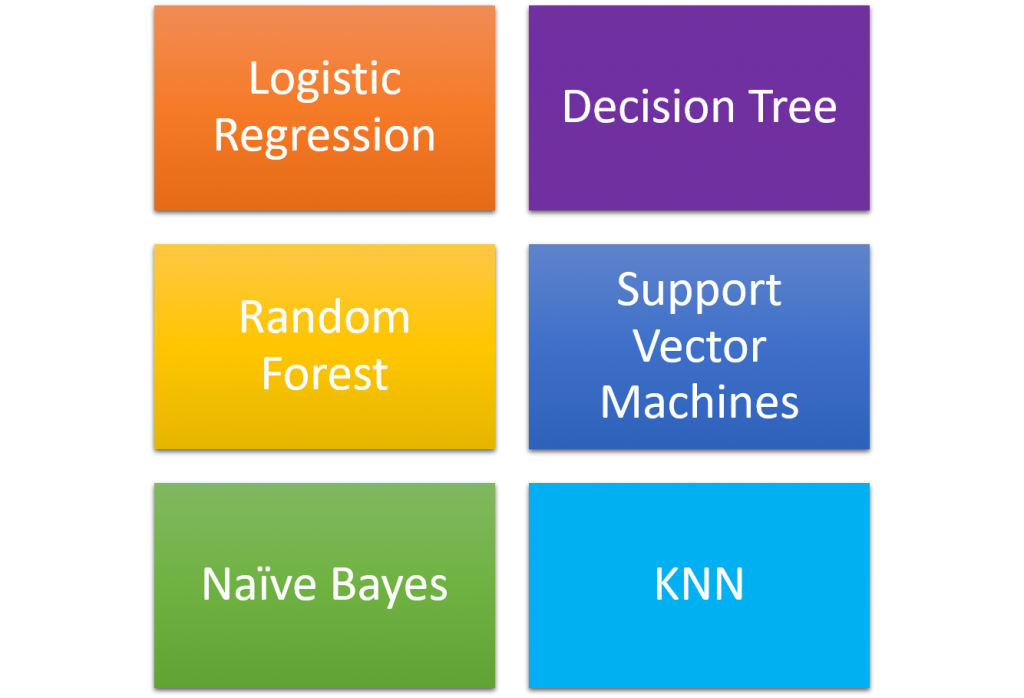The R classification algorithm is a very easy task. By analyzing the training dataset we can predict the target class. We can obtain better boundary conditions that can be used to check the target class using the training dataset. The whole process is known as classification.
R Classification algorithms
Some important points of R classification algorithms are as follow:
- Classifier
It maps the input data to a specific category.
- Classification Model
This model tries to draw some conclusions from the training input values. This conclusion will predict class categories/labels for new data.
- Feature
The measurable property of an event being observed
- Binary classification
The two possible outcomes in this classification task. Like gender classification which has two outcomes male and female.
- Multi-class classification
This classification task in which we have more than two classes. The animal can be a dog or cat but not both at the same time, this is an example of multi-class classification.
- Multi-label classification
In this classification task, each sample is mapped with a set of target labels. A news article that can be about a person, location, and sports at the same time is the best example of multi-label classification.
R Classification Algorithms
Following are some famous classification algorithms:

R Logistic Regression
As per the name, this is a regression algorithm but it is used to predict the value of a categorical variable. This is used to finds the value of a variable that can take just two possible values (0 or 1). Logistic regression finds the relationship between several independent variables and a categorical dependent variable. It not only predicts the class of an object but also provides reason and justification for predicting the object in a specific class.
R Decision Tree
A decision tree is a non-parametric algorithm, which is used for both regression and classification. A decision tree has the ability to manage numerical and categorical values. Decision trees estimate target variables by learning decision rules from data features. Decision works as an if-else structure. If the tree length is deeper, the model fits better.
A decision tree divides the whole dataset into small sets, which forms like a tree structure. The result of a decision tree is the final decision leaf node. A final decision is always presented by the leaf node.
R Random Forest
Random forest algorithm is a supervised machine learning algorithm used for classification and regression, but mostly it is used for classification. Classification algorithms help to classify the categorical datasets. A regression algorithm is used to predict data outcomes like currency forecasting based on previous data.
Random forest is an ensemble technique, which combines algorithms of the diverse or same kind for object classification. When we apply a random forest classifier from the training dataset it picks a random K data-point and then it builds associated decision trees from these data-points. After this “N” number of trees is selected and the first step is performed repeatedly.
In the last, every new data-point anticipates to the belong category, and a new data-point is allocated to the maximum votes category. The total number of trees generated in the random forest is taken as a basic parameter. The maximum depth of a tree in the random forest is known as the maximum parameter depth. If there is no parameter specified then the maximum depth of the tree is none.
R Support Vector Machines
SVM is used for both regression and classification but it is used mostly for classification. It is a very suitable algorithm where we have high dimensions of data. It finds the best separation boundary line between two classes that maximize. There are two types of SVM: linear and non-linear SVM. F we have two classes then we classify it using a single straight line then it is known as linear SVM and If our dataset is not able to classify using a single straight line it is known as non-linear SVM.
R Naive Bayes
Naïve Bayes is Bayes Theorem based classification algorithm. It is very helpful in large datasets because it is a very fast algorithm. It considers all object features as independent of each other. The high accuracy can be achieved with little training.
R K – Nearest Neighbor
KNN is a lazy algorithm. It can be used for both regression and classification. First, it stores all data and then classifies the nearest data point by looking at the distance to a new data point k. The data point which is near to k point gets classified. It classifies all new data points in the relevant category. We measure the distance using hamming and Euclidean distance.
For example, we want to classify males and females. First KNN will store all datasets of male and female and then classify a new image in the male or female category based on similarity.
